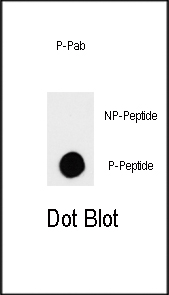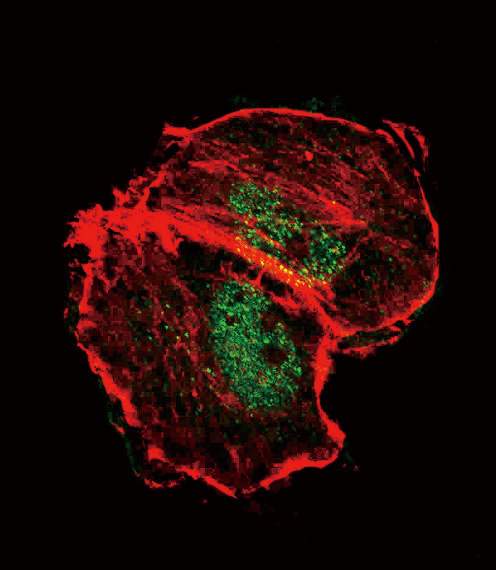

| WB | 咨询技术 | Human,Mouse,Rat |
| IF | 咨询技术 | Human,Mouse,Rat |
| IHC | 咨询技术 | Human,Mouse,Rat |
| ICC | 1/10-1/50 | Human,Mouse,Rat |
| FCM | 咨询技术 | Human,Mouse,Rat |
| Elisa | 咨询技术 | Human,Mouse,Rat |
| Aliases | Tuberin, Tuberous sclerosis 2 protein, TSC2, TSC4 |
| Entrez GeneID | 7249 |
| WB Predicted band size | 200.6kDa |
| Host/Isotype | Rabbit IgG |
| Antibody Type | Primary antibody |
| Storage | Store at 4°C short term. Aliquot and store at -20°C long term. Avoid freeze/thaw cycles. |
| Species Reactivity | Human |
| Immunogen | This TSC2 Antibody is generated from rabbits immunized with a KLH conjugated synthetic phosphopeptide corresponding to amino acid residues surrounding S664 of human TSC2. |
| Formulation | Purified antibody in PBS with 0.05% sodium azide. |
+ +
以下是3篇与Phospho-TSC2(S664)抗体相关的文献摘要信息:
1. **文献名称**: "Phosphorylation of TSC2 by Akt regulates cell survival in response to energy stress"
**作者**: Inoki K, et al.
**摘要**: 研究揭示了Akt激酶通过磷酸化TSC2的S664位点(以及其他位点)抑制其功能,从而解除对mTORC1通路的抑制,促进细胞在能量应激条件下的存活。
2. **文献名称**: "Insulin-stimulated phosphorylation of TSC2 at S664 contributes to mTORC1 activation"
**作者**: Harrington LS, et al.
**摘要**: 该文献证明胰岛素信号通过AKT介导的TSC2 S664磷酸化,削弱TSC1/TSC2复合体对Rheb的抑制作用,最终激活mTORC1并调控细胞生长。
3. **文献名称**: "A novel phosphorylation site in TSC2 critical for its interaction with 14-3-3 proteins"
**作者**: Nellist M, et al.
**摘要**: 发现TSC2的S664磷酸化可促进其与14-3-3蛋白结合,影响TSC2亚细胞定位及对mTORC1通路的调控,为研究结节性硬化症提供机制依据。
注:实际文献中S664位点可能因物种差异存在编号差异(如人类TSC2对应S939),建议结合具体抗体说明书验证位点对应关系。
Phospho-TSC2 (S664) antibody is a specialized tool used to detect the phosphorylation status of tuberous sclerosis complex 2 (TSC2) at serine residue 664. TSC2. in complex with TSC1. acts as a critical regulator of the mTORC1 signaling pathway by functioning as a GTPase-activating protein (GAP) for Rheb. Phosphorylation of TSC2 at specific residues, including S664. modulates its activity, thereby influencing mTORC1-driven processes like cell growth, proliferation, and autophagy. The S664 phosphorylation site is associated with signaling inputs from kinases such as AKT or ERK, which are activated in response to growth factors or cellular stress. For instance, AKT-mediated phosphorylation at S664 (and other sites) may disrupt TSC1-TSC2 complex stability, relieving Rheb inhibition and activating mTORC1.
This antibody is widely employed in biomedical research to study mTOR pathway regulation in contexts such as cancer, metabolic disorders, and neurological diseases. Its specificity allows researchers to assess TSC2 activation status under conditions like insulin stimulation, nutrient availability, or oncogenic stress. Validation often includes testing in cell lines with kinase inhibitors or genetic knockouts to confirm phosphorylation-dependent signals. By detecting TSC2 phosphorylation at S664. this antibody helps elucidate molecular mechanisms underlying diseases linked to mTOR dysregulation, including tuberous sclerosis complex (TSC), a genetic disorder caused by mutations in TSC1 or TSC2.
×